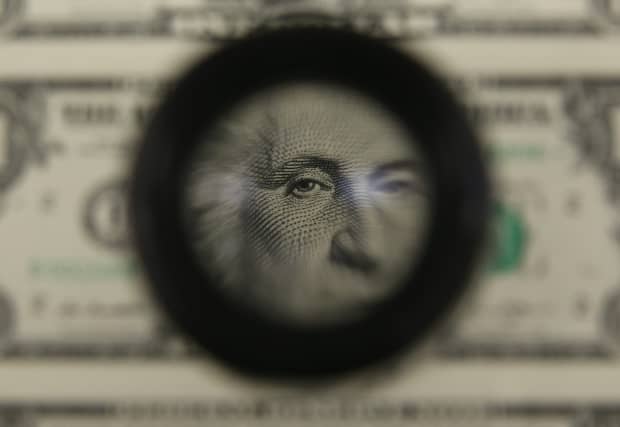This post was originally published on this site

Mark Wilson/Getty Images
The seesaw relationship between the U.S. dollar and equities is getting more intense, with a rapidly falling currency serving as fodder for stock-market bulls who expect the pattern to endure for some time.
“The relative movements of the past month are consistent with the correlation between equities and the dollar observed this year, which is at its strongest level since the period following the global financial crisis,” wrote Jonas Goltermann, economist at Capital Economics, in a Thursday note (see chart below).

Capital Economics
“We think that a similar backdrop of accommodative Fed policy and a recovering global economy will maintain this tight connection between a weaker dollar and higher equities,” he said.
November to remember
U.S. stocks saw a historic rise in November, with the Dow Jones Industrial Average DJIA, +0.28% logging its biggest monthly rise since January 1987. The blue-chip gauge and the benchmark S&P 500 index SPX, -0.06% both saw their strongest November since 1928 as major indexes hit all-time highs.
The greenback, meanwhile, got roughed up, with the ICE U.S. Dollar Index DXY, -0.03%, a measure of the currency against six major rivals, falling 2.3%, its worst month since a 4.2% fall in July and its worst November since 2006.
A weaker dollar is often — but not always — seen as supportive to equities. Exceptions arise, for example, when the dollar is tumbling because of fears over the U.S. economy.
The current dollar weakness, however, can’t be blamed on a weak U.S. economy relative to the rest of the world. While a surge in COVID-19 cases in the U.S. is a worry, real-time data suggest the economic recovery has held up relatively well, noted Chris Weston, head of research at FX brokerage Pepperstone.
Hedging pressure
Meanwhile, longer-dated U.S. Treasury yields are starting to rise again, and the yield curve is steepening amid optimism over the outlook for the global economy, he said, in a Thursday note.
A steeper yield curve, measured by the spread between long- and short-dated Treasury yields, also has implications for corporate hedging, he said, noting that corporate forex hedging ratios of U.S. bond holdings sit around 55%.
“As yield curves rise you tend to see companies increase their hedging ratios on their USD-denominated investments, which naturally means selling USDs and buying alternative currencies,” he said.
Meanwhile, as investors hunt for yield, equity values outside the U.S. remain attractive, also spelling weakness for the dollar.
A year of chasing growth
In fact, “global investors have been grossly overweight U.S. assets, but that is changing as the world recovers in synchronicity and funds are repositioning out of a concentrated U.S. exposure and increasing their geographical diversification,” Weston wrote
2021 appears likely to be a year of chasing economic growth, he said, and “where you see stronger relative growth, you will likely see capital follow. ”
Indeed, investors and analysts have argued that a weaker dollar could provide an even stronger boost for non-U. S. equities.
Read: Here’s what the U.S. dollar’s fall means for the stock market
The dollar’s inverse relationship to U.S. stock prices has been solid since early this year, when the currency jumped to a more-than-three-year high as the coronavirus pandemic sent stocks spiraling into a bear market and sparked a flight to the haven of the world’s reserve currency by international investors, especially those with dollar liabilities.
But as stresses in global financial markets eased and the Federal Reserve moved to address a global shortage of dollars by expanding existing swap lines with major central banks and opening new ones with other authorities, the dollar retreated.
Risk appetite
Meanwhile, in an environment where central bank official interest rates and government bond yields around the world are fairly stable at low levels, investor appetite for risky assets, such as global equities, appears to have become increasingly important for the dollar, Goltermann said.
That’s much like the period that followed the financial crisis in 2007-2009, which changed only after the “taper tantrum” of 2013 saw Treasury yields rise as the Fed mulled ending its bond-buying program. At that time, the relationship between risk appetite and the dollar weakened as the prospect of tighter Fed policy loomed, he said.
This time around, central banks appear set to keep interest rates low even if long-subdued inflation finally picks up steam as the economy recovers more fully after the pandemic is put in the rearview mirror.
“We think that policy rates and government bond yields throughout much of the world will once again remain well-anchored for at least a few years, and possibly for much longer,” Goltermann said. “So, regardless of how quickly vaccines are rolled out, we expect that appetite for risk to remain a key driver of the dollar.”
A weaker dollar also appeared to ease financial conditions in the global economy after the 2008 financial crisis, adding to the favorable backdrop for equities and other risky assets, Goltermann said. A similar phenomenon appears to be the case this time around as well.
Stocks saw a mixed finish Thursday, after the S&P 500 and Nasdaq Composite COMP hit intraday records and the Dow briefly pushed back above 30,000 on renewed optimism over prospects for another round of pandemic aid spending out of Washington. The dollar index traded at its lowest since April 2018, falling 0.5% to 90.67.

